In April, we wrote about the updated New York state Section 1115 Medicaid Redesign Team (MRT) Waiver and how it was a game changer for New York state primary care practices.
Almost a year later, we have updates to share so you can drive meaningful change for your practice — while solving some of the biggest pain points in primary care. Keep reading for key summaries or to check out our complete New York 1115 Medicaid Waiver white paper that includes:
an essential summary of the 1115 Medicaid Waiver;
enhanced payment overview;
anticipated challenges and how to navigate them;
next steps for practices with or without NCQA Patient-Centered Medical Home (PCMH) status; and
how DataGen can help you achieve and retain NCQA PCMH status.
New York 1115 Medicaid Wavier updated summary
Primary care practices in New York state have an unprecedented opportunity to boost their revenue, improve care quality and strengthen patient outcomes through the state’s 1115 Medicaid Waiver.
This initiative, backed by $7.5 billion in federal funding, introduces enhanced incentives for practices aligning with PCMH models and Social Care Networks (SCNs).
Program highlights: The three pillars
The MRT Waiver is built on three foundational pillars:
Population health: Practices with NCQA PCMH recognition can earn retroactive enhanced per member per month (PMPM) payments starting April 1, 2024.
Strengthen the workforce: Focuses on equipping primary care teams with tools and resources for better outcomes.
Social Care Networks (SCNs): A framework to connect healthcare providers with social services, ensuring holistic care.
In part two, we’ll explore exactly how you can secure backdated payments, enhance your care model and align your practice with SCNs for long-term success.
What’s in it for New York state primary care practices?
Retroactive enhanced PMPM payments for PCMH-recognized practices starting April 1, 2024.
Tools to connect with SCNs and address social determinants of health.
Practical strategies to overcome operational challenges and unlock financial benefits.
Not yet PCMH recognized? DataGen’s Medical Practice Consulting services can help your practice navigate the recognition process, streamline workflows and secure these valuable incentives.
Ready to position your practice for success in value-based care?
Download the full white paper to explore actionable strategies, eligibility requirements and how DataGen can support your journey.


Comments
Post a Comment